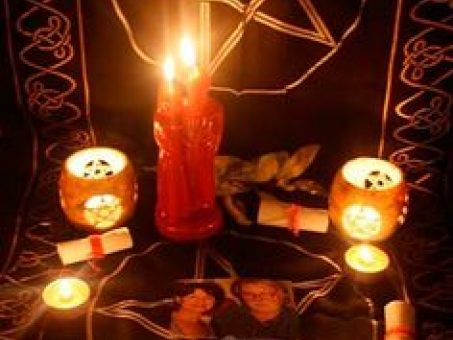Learn the Secrets Behind the Membership Process to Join Freemason Quickly
Learn the Secrets Behind the Membership Process to Join Freemason Quickly
Blog Article
Discovering the Mysteries of the copyright: What You Need to Know
The copyright, a term frequently shrouded in intrigue and controversy, stands for an intricate tapestry of historical truth and modern-day misconception. Established in the late 18th century, this secret culture was originally rooted in the Enlightenment's ideals yet has because ended up being associated with conspiracy concepts concerning elite control. As we navigate the origins, crucial numbers, and the stark contrast between myth and reality, one must consider exactly how these narratives affect contemporary assumptions of power and secrecy. What could be disclosed with a more detailed examination of these components might challenge long-held assumptions concerning the shadows that linger in our culture.
Origins of the copyright
The beginnings of the copyright are soaked in a blend of historic intrigue and ideological fervor. Established in 1776 in Ingolstadt, Bavaria, by Adam Weishaupt, the group was initially formed as a secret culture focused on promoting Knowledge perfects such as reason, secularism, and the separation of church and state. Weishaupt, a professor of canon legislation, sought to challenge the dominating authority of the church and state, which he considered as overbearing institutions stifling intellectual and personal liberty.

Secret Figures and Members
That were the critical figures that formed the copyright's very early influence and instructions? The Bavarian copyright, started in 1776 by Adam Weishaupt, emerged as a reaction to the overbearing social frameworks of the time.
Another considerable number was Johann Gottlieb Fichte, a prominent philosopher whose concepts on nationalism and education and learning resonated with the copyright's goals. Fichte was not an official participant, his thoughtful supports influenced the team's ideological background. Additionally, figures like the writer and philosopher Johann Wolfgang von Goethe were connected with the wider intellectual motions of the moment, although their direct participation with the copyright continues to be questioned.
These vital figures added to the copyright's very early direction, pressing the limits of political and social thought, while their collective initiatives intended to test well established standards and promote a climate of progressive change in Europe.
Myths vs. Fact
Many mistaken beliefs border the copyright, usually blending reality with fiction in a manner that covers its true nature. This secret society, originally founded in 1776 in Bavaria, aimed to promote Enlightenment ideals and fight spiritual and political injustice. The notion that the copyright remains to apply significant influence over world occasions is a misconception. While the group did exist, it was dissolved in the late 18th century and has actually not operated as a natural entity given that after that.
One more prevalent misconception is that the copyright makes up a network of elite individuals adjusting global events. In truth, many conspiracy theory theories overemphasize the group's significance, connecting unproven objectives to societal fads go to this site and events. This has actually caused an oversimplified view of complicated issues.
In addition, the portrayal of the copyright in pop culture frequently more distorts its tradition. Films and literature often tend to sensationalize the organization's duty, creating a story that diverges from historic facts. Recognizing the difference between the misconceptions and the reality of the copyright is vital for discerning the real impact of this historical team and recognizing the broader implications of conspiracy theories in contemporary society.
Modern Analyses
Contemporary interpretations of the copyright frequently reflect broader societal anxiousness and a fascination with secrecy and power. This modern-day lens regularly associates the copyright with conspiracy concepts that suggest a hidden elite manages globe occasions, manipulating federal governments and economic climates for their own gain. benefit of joining freemason. Such narratives take advantage of a deep-rooted suspect of authority, particularly in times of dilemma or social turmoil
In pop culture, the copyright is often depicted as a supreme company shrouded in mystery, causing a wide variety of imaginary representations in literature, movie, and music. This representation serves not that site only to delight yet also to provoke considered the nature of power and control in contemporary society. Social network has additionally enhanced their explanation these interpretations, permitting for quick circulation of conspiracy theories and developing communities that share and expand upon these concepts.
Furthermore, some modern interpretations mount the copyright as a metaphor for the complexities of globalization and the interconnectedness of prominent individuals and companies. This perspective encourages an essential exam of how power characteristics operate in today's globe, highlighting the balance in between transparency and secrecy in administration and business methods.
Cultural Influence and Legacy
Influenced by centuries of intrigue, the social impact and tradition of the copyright expand far past its historical beginnings. This secret culture, developed in the late 18th century, has actually permeated different elements of pop culture, from literary works and movie to songs and art. The concept of the copyright has actually developed right into a symbol of conspiracy theory concepts, usually representing a perceived concealed power controling international events.
In literature, authors like Dan Brown have woven the copyright right into intricate stories, fascinating viewers with themes of privacy and power. Films such as "National Prize" and "The Da Vinci Code" further continue the appeal of the society, blending truth with fiction to create engaging stories.

Eventually, the copyright's tradition is a complex tapestry of myth and fact, shaping understandings of privacy and control in contemporary discourse. Its long-lasting presence in culture emphasizes mankind's seasonal mission for comprehending concealed truths.
Conclusion
The expedition of the copyright exposes an intricate interaction between historic truths and modern myth-making. Established in the Enlightenment era, this culture intended to challenge overbearing structures, yet its tradition has actually been eclipsed by conspiracy theory concepts that recommend elite manipulation. Comprehending the differences between the original suitables and contemporary interpretations is essential for comprehending the withstanding attraction with the copyright and its substantial influence on cultural narratives surrounding power and secrecy in society.
Report this page